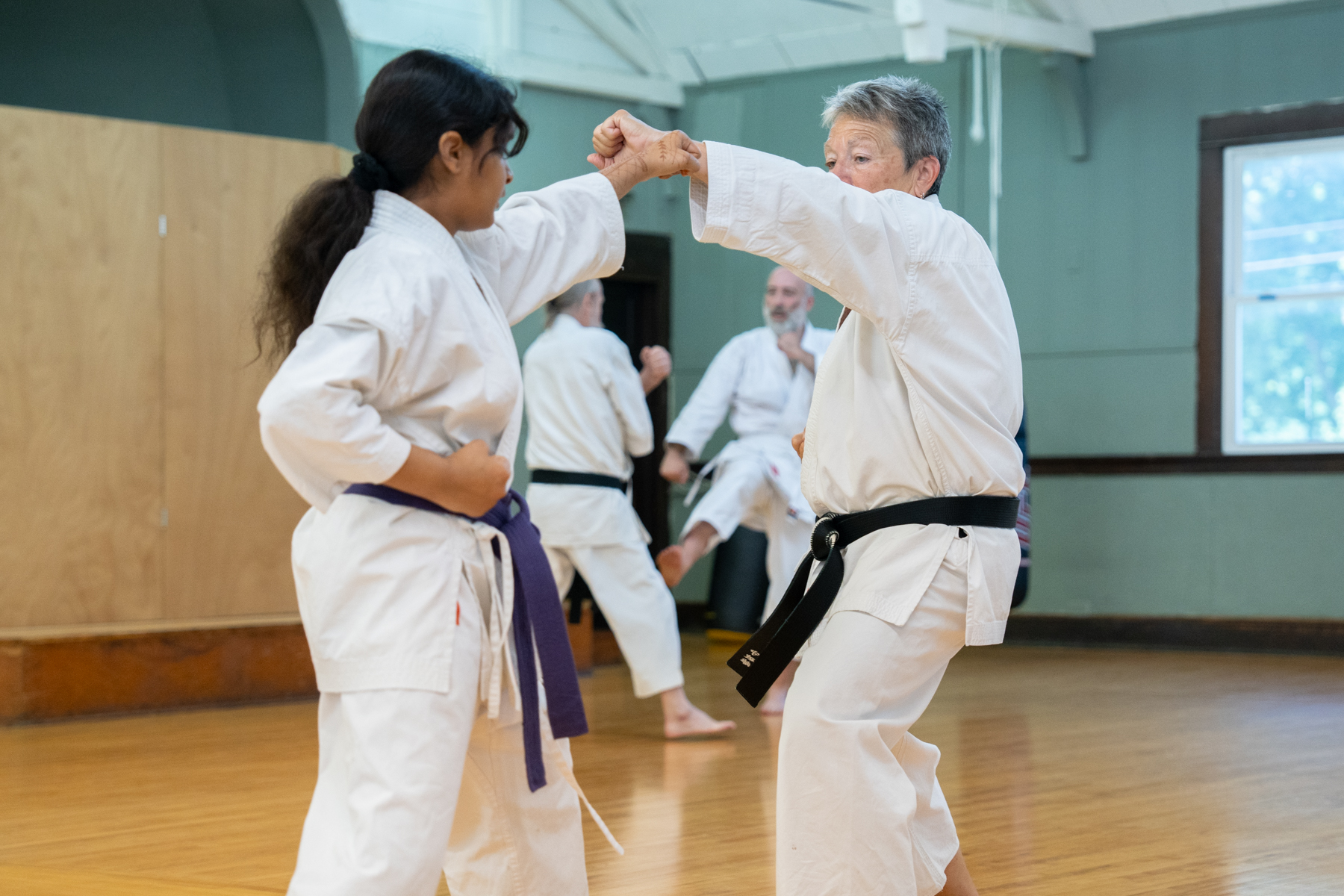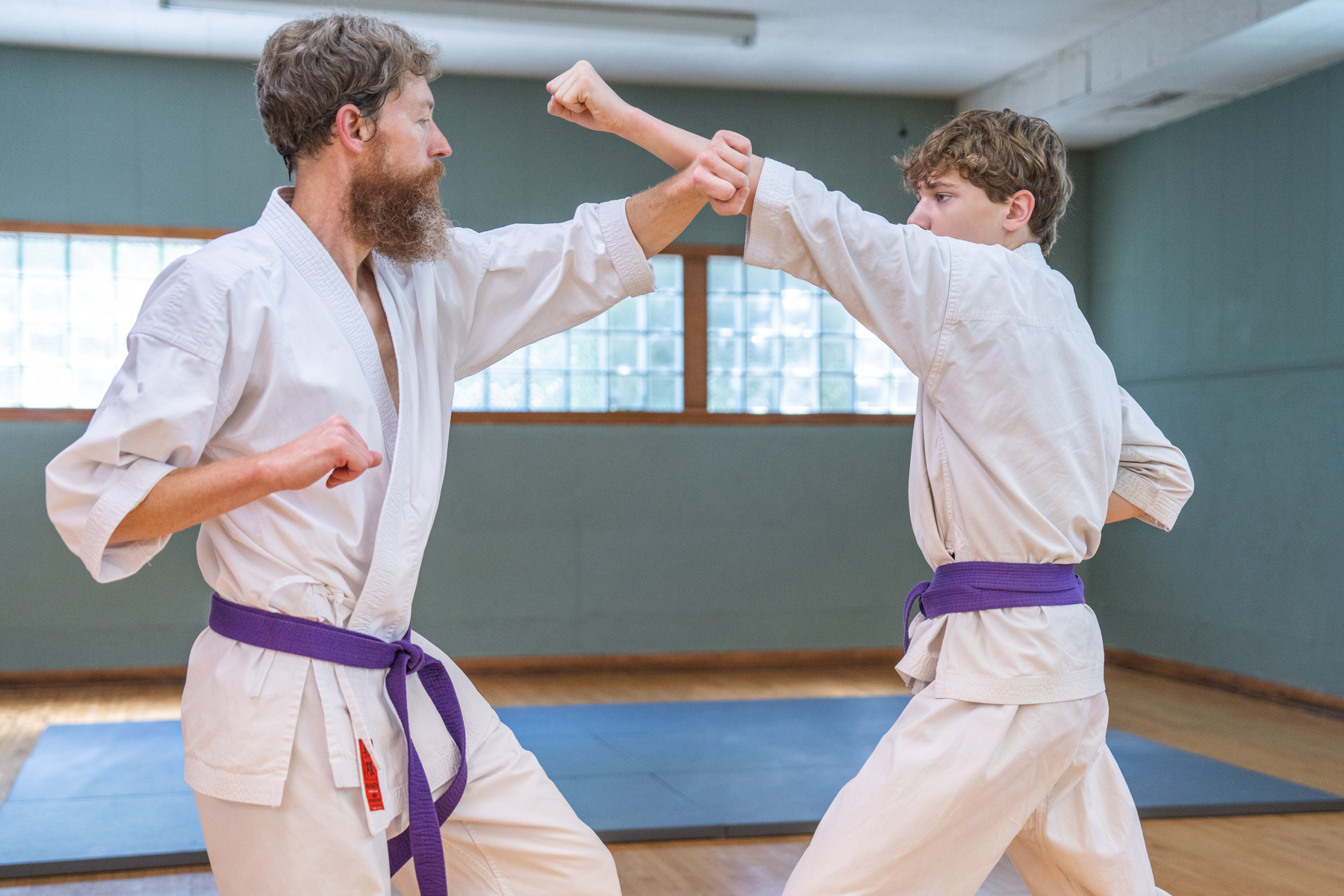More Info
About Shotokan Karate
The study of karate is broken into three equally important parts, listed below. Each class consists of 2 or 3 of those parts:
Basics (Kihon)
Kihon (pronounced kee-hone) includes the stances (dachi), punches (zuki), blocks (uke), and kicks (geri).

Forms (Kata)
Kata (pronounced kah-tah) are a fundamental part of karate training and are a set of pre-arranged steps or techniques against imaginary attacker(s). A different kata is assigned for each belt level as the student grows in their ability and understanding.

Sparring (Kumite)
Kumite (pronounced koo-mi-tay) is the application of both kihon and kata. Beginners start with very basic and controlled self-defense and counterattack and as a karateka (karate student) moves through the ranks, the partner work advances as well until the student is ready to free-spar. It is important to note that Shotokan karate is a non-contact (or very low contact) art.


What will you gain from Karate training (in the words of current students)
Beginner: White & Orange belts
- Self-confidence & self awareness
- Improved physical conditioning
- Self-defense basics
- Sense of body; sense of self
- Beginnings of mind-body connection
- Self-discipline
Intermediate: Green & Purple belts
- Self confidence & self awareness
- Physical conditioning & self discipline
- Self-defense
- Sense of body; sense of self
- Mind-body connection
- Beginnings of presence and focus
Advanced: Brown & Black belts
- Presence and focus
- Body dynamics; mass & force
- Self confidence & situational awareness
- Mind-body connection
- Humility & compassion
- Self-respect and self patience
Want to know more?
Want to know more about karate at the Nokomis Shotokan Karate dojo? Come watch a class, or participate in your complimentary first class!